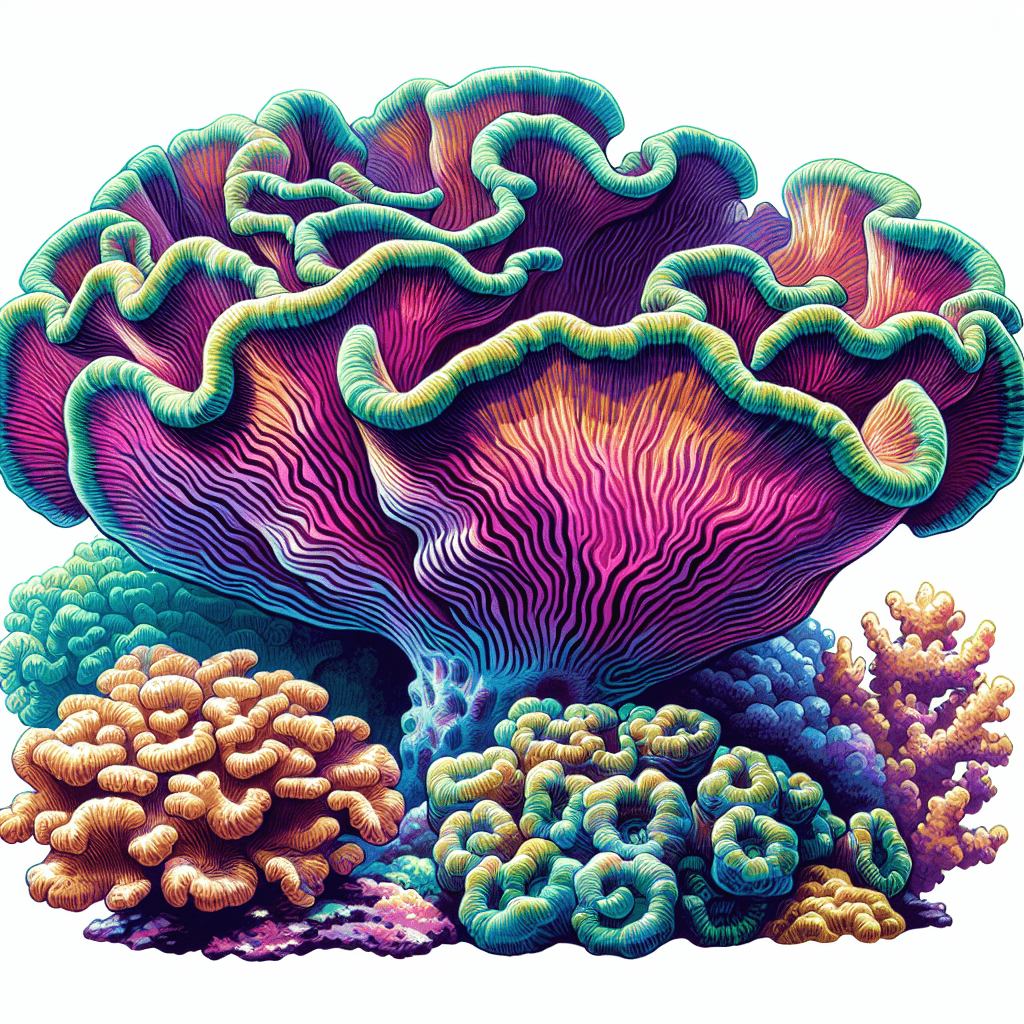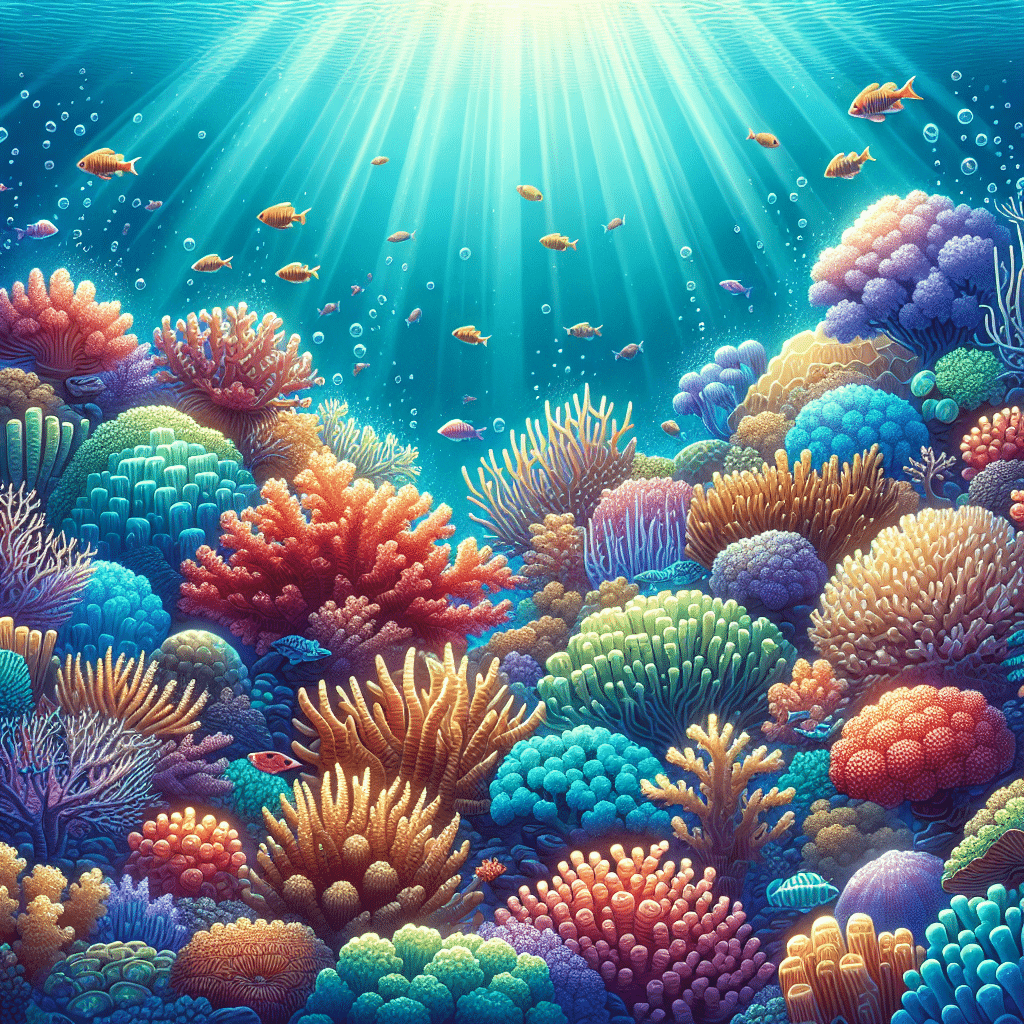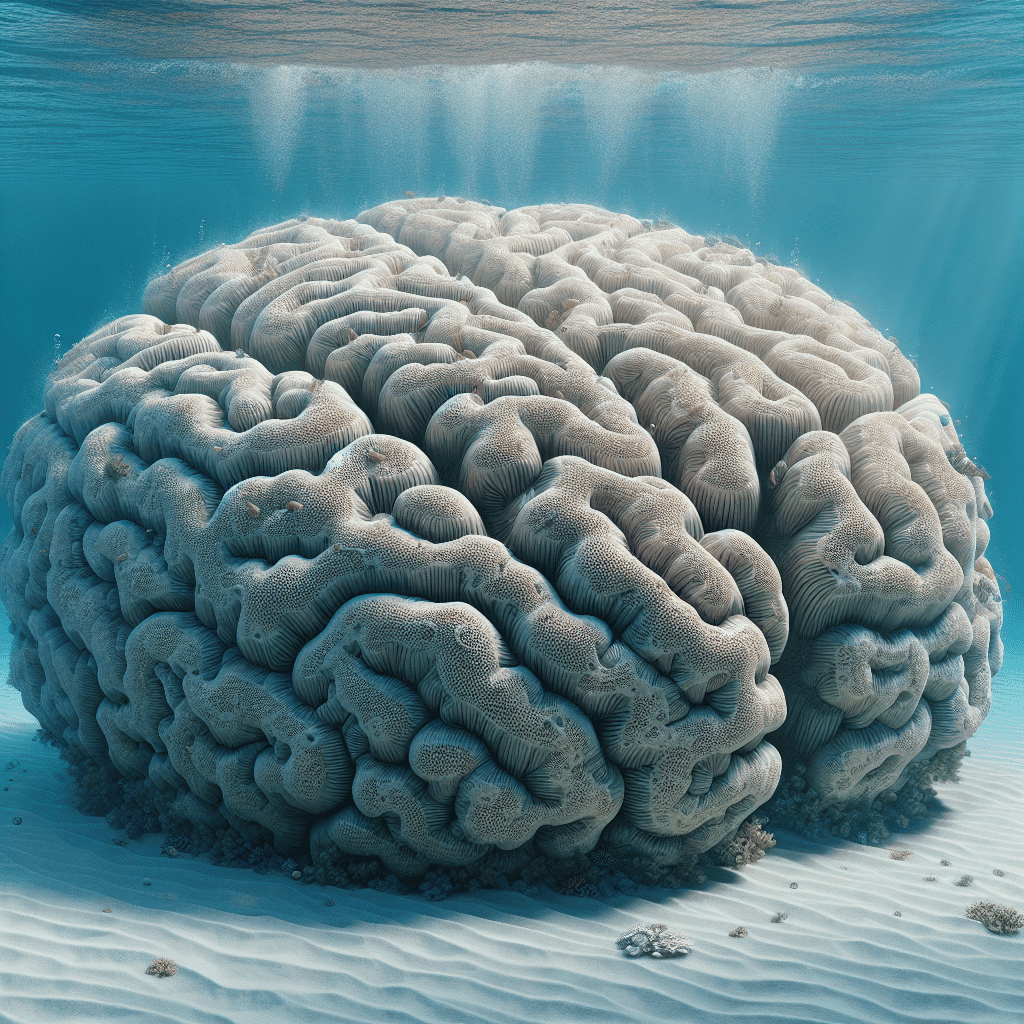Understanding Plate Corals
Role in Coral Reef Ecosystems
Plate corals, scientifically known as Acropora hyacinthus, are essential to coral reef ecosystems. They contribute to creating and maintaining the hard substrate of reefs through the production of their calcium carbonate skeletons. This structure not only supports the coral itself but also provides habitat and shelter for a diverse range of marine species. Without these hard corals, the overall health and biodiversity of reef ecosystems would decline significantly.
The presence of plate corals helps to foster a thriving environment for various fish and invertebrate species, serving as a protective haven from predators. This interconnectedness is vital for the ecological balance within the reef.
| Feature | Importance |
|---|---|
| Habitat Creation | Provides shelter for marine species |
| Substrate Formation | Essential for reef structure |
| Biodiversity Support | Encourages marine life diversity |
Growth and Reproduction
The growth of plate corals is a slow process, often taking between 5 to 10 years for most corals to grow from a single polyp to a mature colony capable of reproducing. During this period, they face various threats such as predation, overgrowth, physical smothering, and pollution.
Reproduction in plate corals is fascinating. Mature colonies release eggs and sperm into the water during spawning events. This mixing of gametes leads to the formation of larvae, which drift with ocean currents until they find suitable substrate to settle on. This process creates biological connections between reefs that can span tens to hundreds of kilometers.
Ocean current direction and strength play a significant role in the success of larval settlement and connectivity between coral populations. The health of one reef can influence the sustainability of adjacent reefs, highlighting the importance of maintaining water quality and ecosystem health.
| Growth Timeline | Description |
|---|---|
| 0-5 Years | Polyp to juvenile colony |
| 5-10 Years | Mature colony capable of reproduction |
Understanding the role of plate corals in reef ecosystems and their growth and reproduction processes is crucial for anyone interested in maintaining a healthy reef tank. For further exploration of different coral types, visit our sections on brain coral, torch coral, and mushroom coral.
Types of Plate Corals
When diving into the world of plate corals, it’s essential to recognize the different varieties and their unique characteristics. I find that understanding these traits can make a significant difference in how I care for them in my reef tank.
Varieties and Characteristics
Plate corals belong to the family Fungiidae and include around 13 different genera such as Fungia, Heliofungia, Diaseris, Cycloseris, and Lithophyllon. These corals are solitary and typically grow in a flat, plate-like structure. Some have a single mouth, while others can have multiple mouths, displaying various shapes from circular to irregular, similar to tongue corals.
| Variety | Characteristics |
|---|---|
| Fungia | Circular shape, single mouth |
| Heliofungia | Often called long tentacle plate coral, may exhibit sudden death despite size |
| Diaseris | Flat structure, multiple mouth options |
| Cycloseris | Round and can adapt to various tank conditions |
| Lithophyllon | Unique shapes, commonly found in Pacific |
Plate corals are generally easy to keep and can adapt to a wide range of tank conditions. However, I’ve noticed that the Heliofungia variety can be a bit tricky due to its history of sudden death, even when properly cared for (Tidal Gardens).
Popular Color Variations
Plate corals come in an array of beautiful colors, making them a stunning addition to any reef aquarium. Some popular color variations include:
- Green: Often vibrant and eye-catching, these can be a focal point in your tank.
- Brown: More subdued but can provide a nice contrast with brighter corals.
- Purple: A rarer find that adds a unique touch to your coral collection.
- Red and Orange: Bright colors that can bring warmth to the aquarium.
The colors can sometimes be influenced by the lighting conditions in the tank, so I recommend experimenting with different lighting setups to see how the corals respond.
In my experience, sourcing plate corals from regions like Australia and Indonesia provides some of the most vibrant specimens (Tidal Gardens). Whether you’re adding a plate coral for its beauty or its role in the ecosystem, understanding the types and their characteristics is key to keeping them healthy in your reef tank. For more information on other types of corals, check out our articles on brain coral and mushroom coral.
Care and Maintenance
Taking care of plate corals can be a rewarding experience, especially for hobbyists like me. These corals are generally easy to maintain and have some fascinating characteristics. Here’s what I’ve learned about their placement, tank conditions, and feeding.
Placement and Tank Conditions
Plate corals are quite adaptable and can thrive in various tank conditions. They prefer moderate light and water flow, making them suitable for many reef tanks. I usually position them on the substrate or on a flat rock to give them space to spread out.
Here are some ideal conditions to consider:
| Parameter | Ideal Range |
|---|---|
| Light Intensity | Moderate to High |
| Water Flow | Moderate |
| pH | 8.1 – 8.4 |
| Salinity | 1.023 – 1.025 specific gravity |
| Temperature | 72°F – 78°F (22°C – 26°C) |
It’s essential to keep an eye on water quality, as plate corals can be sensitive to drastic changes. Regular water testing is key to maintaining a healthy environment.
Feeding and Diet
One of the cool things about plate corals is that they are photosynthetic, which means they can produce their own energy from light. However, I still feed them occasionally for better growth and health. I usually offer them Vitalis LPS pellets or other coral-specific sinking pellets once a week. They also enjoy some frozen foods like brine shrimp, mysis shrimp, and krill.
Overfeeding can be harmful, so I make sure to provide only what they can consume in a short amount of time. Watching them eat is enjoyable, as they extend their tentacles and catch the food floating around.
Here’s a quick overview of their feeding habits:
| Food Type | Frequency | Notes |
|---|---|---|
| Vitalis LPS pellets | Weekly | Photosynthesis is primary |
| Frozen foods (brine, mysis) | Occasionally | Fun to watch them eat |
| Coral-specific pellets | Weekly | Helps with growth |
Before adding new plate corals to my tank, I dip them in a coral dip like Coral RX or Two Little Fishies Revive for extra precaution, although they generally don’t have known pests (Fragbox). This practice helps ensure they adapt well to my aquarium environment.
Overall, caring for plate corals is straightforward, and with the right conditions and feeding routine, they can thrive beautifully in my reef tank. For more coral options, check out other types like brain coral or mushroom coral.
Special Considerations
When caring for plate corals, there are a few special considerations to keep in mind to ensure they thrive in your reef tank.
Long Tentacle Plate Corals
Long tentacle plate corals are a unique variation of standard plate corals. They exhibit long tentacles that closely resemble those of torch corals but without the sting. I’ve noticed that clownfish sometimes mistake them for anemones and may even try to host them (Fragbox).
Caring for long tentacle plate corals is similar to caring for regular plate corals. They are generally easy to maintain and can adapt well to various tank conditions. Just like their counterparts, they are photosynthetic and can also benefit from supplemental feeding. It’s fascinating to watch them extend their tentacles to catch food, especially when they consume coral-specific sinking pellets or frozen foods like brine shrimp or mysis shrimp.
Pests and Precautions
While plate corals do not have known pests, I always recommend dipping them in a coral dip before introducing them to the aquarium. Dipping with products like Coral RX or Two Little Fishies Revive Coral Dip is a good practice to help eliminate any potential unwanted organisms before they enter your tank (Fragbox).
It’s important to monitor your plate corals closely after adding them to your tank. Overfeeding can be detrimental, so I try to feed them only once a week with specific foods. Additionally, be cautious of certain fish and invertebrates, as they can cause damage by constantly feeding on the corals.
Plate corals are known for their mobility; they can move around on their own by inflating their flesh. This makes it challenging to keep them in one spot in the tank. I’ve seen them jump off their designated area onto the substrate, despite my efforts to keep them secure on the rockscape.
Keeping these considerations in mind will help you successfully care for your plate corals and enjoy their beauty in your reef tank. For more information on different types of corals, check out our articles on brain coral, torch coral, and bubble coral.
Plate Coral Species
Family of Fungiidae
Plate corals belong to the family Fungiidae, which includes around 13 different genera such as Fungia, Heliofungia, Diaseris, Cycloseris, and Lithophyllon. These fascinating corals are solitary in nature and can grow to resemble a plate, often with a single mouth or multiple mouths. Some species take on circular shapes, while others may have irregular forms, similar to tongue corals. Plate corals are known for their adaptability, making them relatively easy to care for in a reef tank environment (Fragbox, Tidal Gardens).
Here’s a quick overview of some notable genera within the Fungiidae family:
| Genus | Description |
|---|---|
| Fungia | Typically circular with a single mouth |
| Heliofungia | Long tentacle variety, known for sudden death |
| Diaseris | Irregular-shaped, often found on the substrate |
| Cycloseris | Usually flat with unique patterns |
| Lithophyllon | Similar to Fungia but with different textures |
Geographic Origins
Plate corals are commonly found in the Pacific region, with many of the specimens in the reef aquarium hobby sourced from Australia and Indonesia. These corals thrive in various reef environments, demonstrating resilience in adapting to different tank conditions. However, keep in mind that the Heliofungia variety, often referred to as the long tentacle plate coral, has a reputation for sudden death despite its impressive growth potential (Tidal Gardens).
By understanding the family of Fungiidae and their geographic origins, I can better appreciate the unique characteristics of plate corals and their role in the reef tank ecosystem. As I continue to explore the fascinating world of corals, I’ll keep these insights in mind while caring for my reef tank.
Challenges and Risks
Vulnerability to Sudden Death
Plate corals, particularly the Heliofungia variety, are generally easy to care for and can adapt to various tank conditions. However, they have been known to experience sudden death, even after growing to impressive sizes (Tidal Gardens). This vulnerability can be alarming for hobbyists who invest time and resources into maintaining a healthy reef tank. While the exact causes of this phenomenon are not fully understood, it highlights the importance of providing stable water quality and proper care. Regular monitoring of tank parameters can help mitigate risks.
| Parameter | Ideal Range |
|---|---|
| Temperature | 75 – 80°F |
| pH | 8.1 – 8.4 |
| Salinity | 1.023 – 1.025 |
| Nitrate | < 10 ppm |
| Phosphate | < 0.03 ppm |
Mobility and Tank Placement
One of the unique characteristics of plate corals is their ability to move around on their own. They achieve this by inflating their flesh, which can make it challenging to keep them in a specific location within the tank (Tidal Gardens). They are known to be very capable jumpers and can often end up on the substrate, despite efforts to secure them in their preferred spot.
When placing plate corals in your reef tank, it’s essential to consider their tendency to move. Here are a few tips for effective placement:
- Choose a Stable Rock Structure: Avoid loose or unstable rocks that could shift easily, causing the coral to fall.
- Provide Ample Space: Ensure there’s enough space around the coral to allow for its movement without crowding other corals.
- Monitor Regularly: Keep an eye on the coral’s position and adjust as necessary to maintain a healthy environment.
In addition, it’s advisable to dip plate corals in a coral dip before adding them to your aquarium, using products like Coral RX or Two Little Fishies Revive Coral Dip, as a precaution against any unseen pests. These steps can help ensure the health and longevity of your plate coral in your reef tank.
Coral Interactions
Coral-Dwelling Fish Species
I’ve always found the relationship between plate coral and various fish species fascinating. Plate coral (Acropora hyacinthus) serves as an important food source for several fish, including the Chevron butterflyfish (Chaetodon trifascialis) and the Black-backed butterflyfish (Chaetodon melannotus) (eAtlas). These fish not only benefit from the coral as a food source but also play a crucial role in the coral ecosystem.
Herbivorous fish, like parrotfishes, help maintain coral health by grazing on turf algae. This grazing limits the growth of macroalgae that could outcompete corals for space and light. By creating new settlement sites for coral planulae, these fish contribute to the overall health of the reef.
| Fish Species | Coral Relationship |
|---|---|
| Chevron Butterflyfish | Food source |
| Black-backed Butterflyfish | Food source |
| Bumphead Parrotfish | Grazes algae, promotes coral growth |
Impact on Coral Reefs
The interactions between fish and plate coral can have both positive and negative effects on coral reefs. Corallivorous fishes, like the bumphead parrotfish, are known to consume large amounts of live coral—up to 13.5 kg m² per year and over 5 tons of reef skeleton annually (eAtlas). This feeding behavior can cause significant damage to coral species, leading to a decline in coral health and structural complexity.
The loss of live coral due to biological degradation can have severe consequences for coral-dwelling species. It often results in reduced abundance and diversity of reef fish over time. Additionally, the decline in structural complexity can further exacerbate the adverse effects on fish communities, affecting their survival and abundance.
In summary, the interactions between plate coral and fish species are crucial for maintaining the health of coral reefs. Understanding these relationships helps me appreciate the delicate balance within reef ecosystems. For more information about different coral types, check out articles on brain coral, mushroom coral, and acropora.
Coral Conservation
Threats to Coral Reefs
Coral reefs are incredibly important ecosystems, but they face numerous threats that can lead to their decline. Climate change is one of the most significant dangers, causing ocean temperatures to rise and leading to coral bleaching. Coral bleaching occurs when corals expel the algae living in their tissues, which provide them with food and color. Without these algae, corals turn white and become more susceptible to diseases.
Additionally, pollution, overfishing, and destructive fishing practices also contribute to the degradation of coral reefs. Coral cover has declined by 30–50% since 1980, highlighting the urgency of addressing these issues (Wiley Online Library). Protecting existing coral reefs with high ecological, cultural, and economic values should be a priority to ensure their survival.
| Threats to Coral Reefs | Impact |
|---|---|
| Climate Change | Rising ocean temperatures lead to coral bleaching. |
| Pollution | Introduces harmful substances that can kill corals. |
| Overfishing | Disrupts the balance of reef ecosystems. |
| Destructive Fishing | Damages the physical structure of reefs. |
Importance of Coral Protection
Protecting coral reefs is essential not just for the corals themselves, but for the overall health of our oceans and the livelihoods of millions of people. Coral reefs provide habitat for a diverse range of marine life, support fisheries, and serve as natural barriers that protect coastlines from erosion and storm damage.
Efforts to rebuild reefs and safeguard their economic value are crucial. Investment in reef restoration can offset the rapid loss of these ecosystems. Strategies like selective breeding of corals for heat tolerance and creating in-water nurseries can help enhance coral resilience against future climate stresses. Ensuring access to enough coral material for restoration is vital, especially in areas where populations are greatly reduced.
Conserving coral reefs not only helps preserve biodiversity but also maintains the cultural and economic benefits that these ecosystems provide. Protecting them is an investment in the future of our oceans and the communities that rely on them. For more information on corals and their various types, check out our articles on brain coral, black coral, and mushroom coral.



